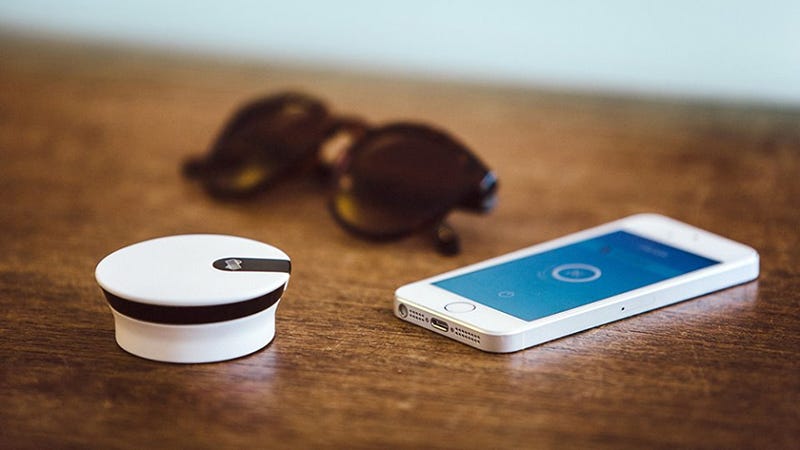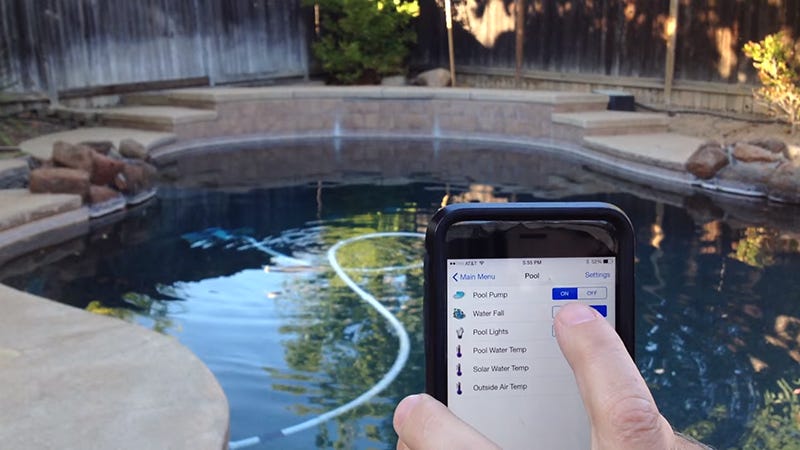- Jun 24, 2016
- 636
11 DIY Projects to Turn Your House Into a Smart Home:
The smart home revolution definitely isn’t happening overnight. Even with a flood of new devices and platforms available, most of us are still only inching toward fully automated homes. Still, you can take matters into your own hands and speed up the rate of progress with these DIY smart home systems. They’re easy to build and most can be up and running in under an hour...
Raspberry Pi-powered security camera-

If you’ve got a Raspberry Pi to hand at home, you can build all kinds of smart devices with it, including a security camera system to meet your exact requirements. YouTuber JackkTutorials explains how you can use the Pi to set up a DIY security camera that keeps an eye on your property, even when the lights are off.
To get started, you’ll need a Raspberry Pi, the official Pi camera accessory, and a few other bits and pieces to get started, as well as the free MotionPie software that lets you access your new device through any web browser. It includes some of the features you’ll find on the best security cams on the market including motion detection, image uploads, and FTP support.
Upgrade your AC unit with Sensibo-

If you want a smart home hack with huge benefits and very little effort, then pick up a Sensibo to stick on the front of your current air conditioner. The intelligent add-on works with most AC units to allow you to control it with your phone, set timers for heating and cooling, and hopefully saves you money on your energy bills along the way.
It’s one of the easiest smart home hacks you’ll come across, with Sensibo’s makers promising you can be up and running in just a couple of minutes. IFTTT integration is also supported to enable even more possibilities, and just like Google’s Nest thermostat, the device learns your schedule and habits over time, so it should get easier to operate as time goes on.
Automated pool controller-

If you’re lucky enough to have a pool at home and you have the time to commit to a more advanced DIY smart home project, this pool controller guide on Hackster.io is worth a look. By the time you’ve finished you can have a system that controls the pump, heating and lights around your pool, with Raspberry Pi and Arduino boards at the heart of it.
You’re also going to need the Windows 10 IoT Core software, but full instructions and schematics are provided if you want to give this a go. Like all the other projects listed here, you can of course modify any of the aspects of the system to suit your own setup. In fact, it’s almost inevitable you’ll have to add some tweaks to this based on your own pool.
A door that recognizes your face-

Windows Hello can let you into your laptop just by recognizing your facial features, so why not set up a smart door inside your home that works in the same way? Short of coming up with some Mission: Impossible-style face masks, no one else is going to be able to get in there. All the instructions you need can be found in this guide posted to Hackster.io.
Now, obviously building a smart door with facial recognition isn’t the kind of project you can knock off in an afternoon, but if you want to give yourself a challenge, this is an ideal choice. At the center of the operation you need a Raspberry Pi or a MinnowBoard MAXand Microsoft Windows 10 IoT Core is the main software platform you’re going to be making use of.
To Read the Remaining 7 DIY Smart Home Projects please visit the link at the top of the page
The smart home revolution definitely isn’t happening overnight. Even with a flood of new devices and platforms available, most of us are still only inching toward fully automated homes. Still, you can take matters into your own hands and speed up the rate of progress with these DIY smart home systems. They’re easy to build and most can be up and running in under an hour...
Raspberry Pi-powered security camera-

If you’ve got a Raspberry Pi to hand at home, you can build all kinds of smart devices with it, including a security camera system to meet your exact requirements. YouTuber JackkTutorials explains how you can use the Pi to set up a DIY security camera that keeps an eye on your property, even when the lights are off.
To get started, you’ll need a Raspberry Pi, the official Pi camera accessory, and a few other bits and pieces to get started, as well as the free MotionPie software that lets you access your new device through any web browser. It includes some of the features you’ll find on the best security cams on the market including motion detection, image uploads, and FTP support.
Upgrade your AC unit with Sensibo-

If you want a smart home hack with huge benefits and very little effort, then pick up a Sensibo to stick on the front of your current air conditioner. The intelligent add-on works with most AC units to allow you to control it with your phone, set timers for heating and cooling, and hopefully saves you money on your energy bills along the way.
It’s one of the easiest smart home hacks you’ll come across, with Sensibo’s makers promising you can be up and running in just a couple of minutes. IFTTT integration is also supported to enable even more possibilities, and just like Google’s Nest thermostat, the device learns your schedule and habits over time, so it should get easier to operate as time goes on.
Automated pool controller-

If you’re lucky enough to have a pool at home and you have the time to commit to a more advanced DIY smart home project, this pool controller guide on Hackster.io is worth a look. By the time you’ve finished you can have a system that controls the pump, heating and lights around your pool, with Raspberry Pi and Arduino boards at the heart of it.
You’re also going to need the Windows 10 IoT Core software, but full instructions and schematics are provided if you want to give this a go. Like all the other projects listed here, you can of course modify any of the aspects of the system to suit your own setup. In fact, it’s almost inevitable you’ll have to add some tweaks to this based on your own pool.
A door that recognizes your face-

Windows Hello can let you into your laptop just by recognizing your facial features, so why not set up a smart door inside your home that works in the same way? Short of coming up with some Mission: Impossible-style face masks, no one else is going to be able to get in there. All the instructions you need can be found in this guide posted to Hackster.io.
Now, obviously building a smart door with facial recognition isn’t the kind of project you can knock off in an afternoon, but if you want to give yourself a challenge, this is an ideal choice. At the center of the operation you need a Raspberry Pi or a MinnowBoard MAXand Microsoft Windows 10 IoT Core is the main software platform you’re going to be making use of.
To Read the Remaining 7 DIY Smart Home Projects please visit the link at the top of the page
